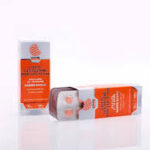When purchasing a vanity for your bathroom, one important consideration is whether you need to assemble it yourself. Understanding the assembly requirements can significantly impact your shopping experience and the installation process. This blog will explore the types of vanities available, the benefits of pre-assembled options, and provide insights into assembly processes and tips.
1. Types of Vanities Available
There are several types of vanities available on the market, each with different assembly requirements:
- Pre-assembled Vanities: These vanities come fully constructed, making them ready to use upon delivery. They often offer convenience and ease of installation.
- Flat-pack or Assembly-required Vanities: These are packaged in sections that require assembly. They typically come with all necessary parts and instructions.
- Custom-built Vanities: These vanities are designed and constructed to fit specific dimensions and styles. Assembly may vary based on the design and materials used.
For a variety of options, including both pre-assembled and flat-pack styles, explore Sydney Home Centre vanities.
2. Benefits of Pre-Assembled Vanities
Choosing a pre-assembled vanity has several advantages:
- Time-Saving: With no assembly required, you can have your new vanity installed and ready to use almost immediately after delivery.
- Reduced Risk of Errors: Pre-assembled vanities eliminate the possibility of assembly mistakes, ensuring a seamless setup.
- Instant Usability: You won’t need to spend time piecing together components; the vanity is ready for use as soon as it is installed.
3. Understanding Flat-Pack Vanities
Flat-pack vanities are a popular choice for many homeowners. Here’s what to know about them:
- Assembly Requirement: These vanities come disassembled, often in compact packaging, which makes them easier to transport.
- Common Components: Flat-pack vanities typically include the cabinet, countertop, sink, and any necessary hardware for assembly.
- Tools Needed: Basic tools like a screwdriver, hammer, and level are often required for assembly.
4. Assembly Process Overview
If you opt for a flat-pack vanity, here’s a simple overview of the assembly process:
- Unpacking: Carefully unpack the components and check for all parts as per the instruction manual.
- Basic Assembly Steps: Start by assembling the cabinet, attaching any legs or supports, and then secure the countertop. Follow the instructions for installing the sink and any additional features.
- Tips for a Smooth Process: Lay out all parts and tools before starting, and refer to the instructions frequently to avoid confusion.
5. When to Consider Hiring a Professional
There are situations where hiring a professional for installation may be beneficial:
- Complex Assembly: If the vanity has intricate designs or requires significant modifications, a professional can ensure everything is assembled correctly.
- Plumbing and Installation Considerations: Connecting plumbing can be tricky; hiring a licensed plumber can help avoid leaks and ensure proper installation.
- Benefits of Professional Installation: Professionals bring expertise, saving you time and ensuring that the vanity is safely and securely installed.
6. DIY Assembly Tips
If you decide to tackle the assembly yourself, here are some useful tips:
- Essential Tools: Make sure you have all the necessary tools on hand before starting.
- Safety Precautions: Always wear safety gear and work in a well-ventilated area, especially when using power tools.
- Time Estimates: Depending on the complexity, allow yourself ample time to complete the assembly without rushing.
7. Common Mistakes to Avoid
To ensure a successful assembly, be mindful of these common mistakes:
- Misplacing Parts: Keep track of all components during assembly to avoid confusion later on.
- Skipping Steps: Follow the assembly instructions carefully; skipping steps can lead to structural issues.
- Ignoring Manufacturer Instructions: Always refer to the provided manual for guidance specific to your vanity model.
8. Post-Assembly Considerations
After successfully assembling your vanity, consider these final steps:
- Ensuring Stability: Check that the vanity is level and securely fastened to the wall, if necessary.
- Connecting Plumbing: Make sure all plumbing connections are tight and leak-free.
- Adding Finishing Touches: Use caulking to seal any gaps between the vanity and the wall or countertop for a polished look.
Conclusion
Deciding whether to assemble your vanity yourself depends on the type of vanity you choose and your comfort level with DIY projects. By understanding the various options available and their assembly requirements, you can make an informed decision that suits your needs. Whether you prefer the convenience of a pre-assembled vanity or the satisfaction of a DIY flat-pack assembly, you have options to enhance your bathroom space.


